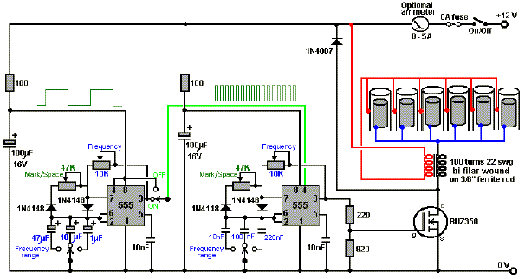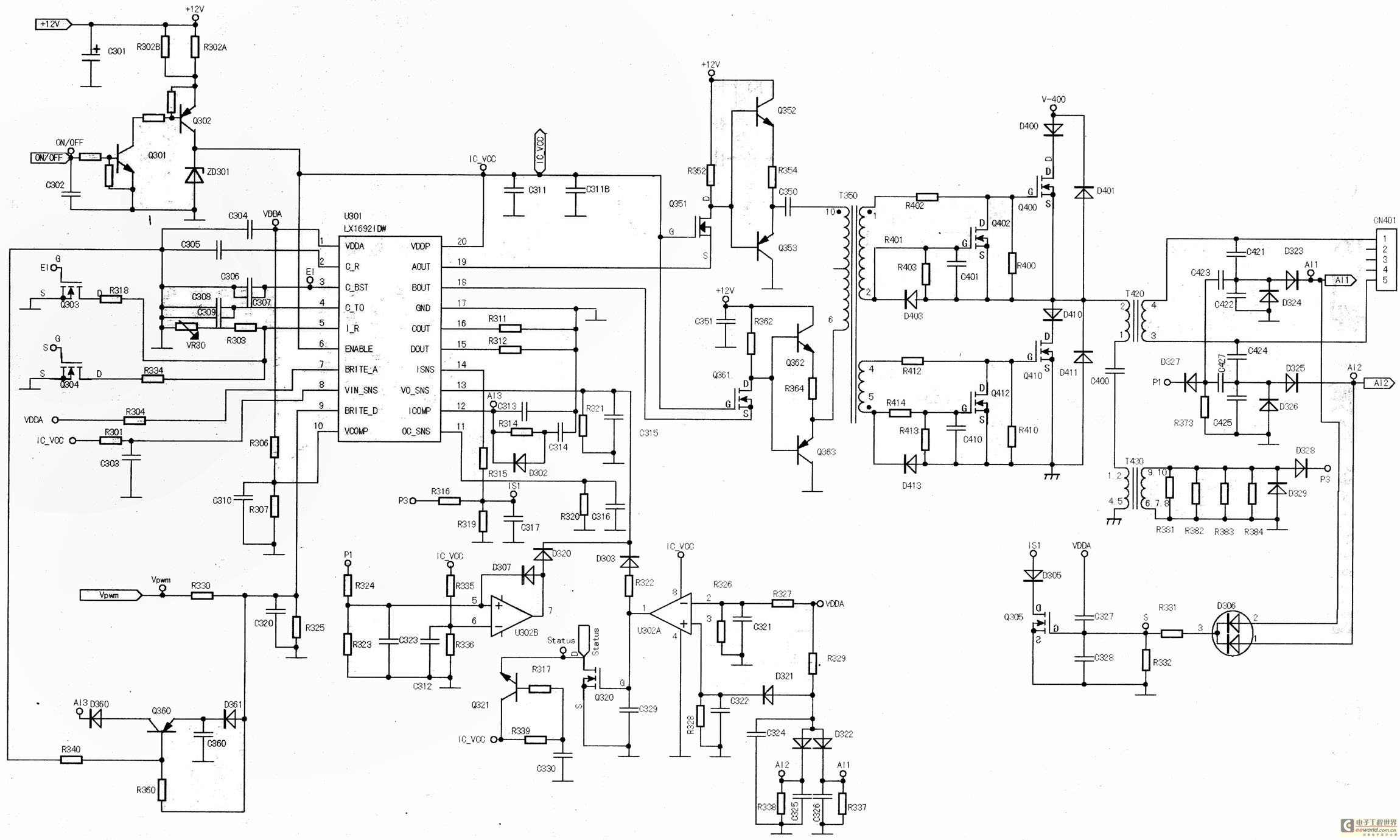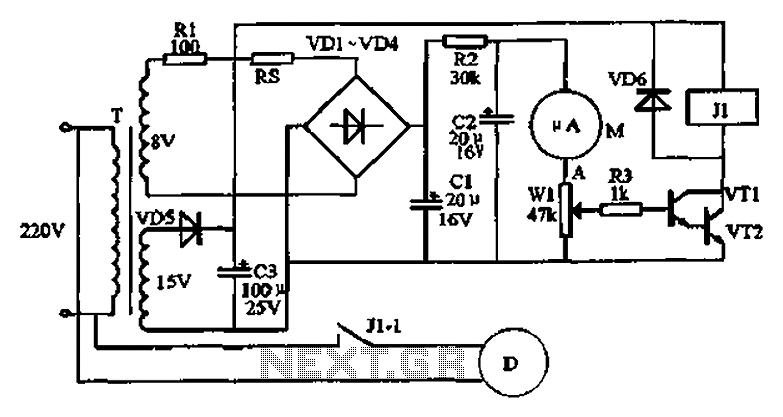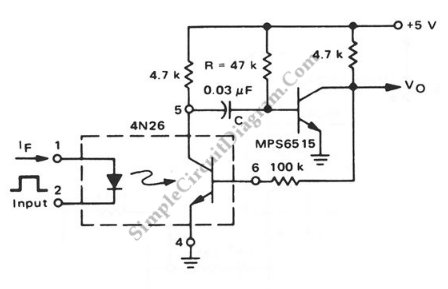
Hydrogen Generator 555 Timer Pulse Width Modulation Circuit

How to create a hydrogen generator using a 555 timer circuit with Pulse Width Modulation (PWM). This PWM circuit can generate hydrogen on demand.
The hydrogen generator circuit utilizing a 555 timer operates by controlling the duty cycle of the PWM signal to regulate the electrolysis process. The 555 timer is configured in astable mode, producing a continuous square wave output. This output is fed to an electrolytic cell, where water (H2O) is split into hydrogen (H2) and oxygen (O2) gases through the application of an electric current.
The circuit design includes the following components: a 555 timer IC, resistors, capacitors, and an electrolytic cell consisting of two electrodes submerged in water. The resistors determine the frequency and duty cycle of the PWM signal, while the capacitor helps in stabilizing the output waveform. The duty cycle can be adjusted by varying the values of the resistors, enabling the user to control the amount of hydrogen produced.
Power supply requirements for the circuit typically range from 5V to 15V, depending on the specific design and components used. The electrolytic cell must be constructed from materials that are resistant to corrosion, such as stainless steel or graphite, to ensure longevity and efficiency.
Safety precautions should be taken when working with hydrogen, as it is highly flammable. Adequate ventilation is necessary, and the circuit should be housed in a non-combustible enclosure to prevent any fire hazards. The generated hydrogen can be collected and utilized for various applications, including fuel cells or combustion engines, demonstrating the practical utility of this PWM-controlled hydrogen generator circuit.How to Make a Hydrogen Generator 555 Timer Circuit PWM. This Pulse Width Modulation (PWM) Circuit could Produce Hydrogen on Demand.. 🔗 External reference
The hydrogen generator circuit utilizing a 555 timer operates by controlling the duty cycle of the PWM signal to regulate the electrolysis process. The 555 timer is configured in astable mode, producing a continuous square wave output. This output is fed to an electrolytic cell, where water (H2O) is split into hydrogen (H2) and oxygen (O2) gases through the application of an electric current.
The circuit design includes the following components: a 555 timer IC, resistors, capacitors, and an electrolytic cell consisting of two electrodes submerged in water. The resistors determine the frequency and duty cycle of the PWM signal, while the capacitor helps in stabilizing the output waveform. The duty cycle can be adjusted by varying the values of the resistors, enabling the user to control the amount of hydrogen produced.
Power supply requirements for the circuit typically range from 5V to 15V, depending on the specific design and components used. The electrolytic cell must be constructed from materials that are resistant to corrosion, such as stainless steel or graphite, to ensure longevity and efficiency.
Safety precautions should be taken when working with hydrogen, as it is highly flammable. Adequate ventilation is necessary, and the circuit should be housed in a non-combustible enclosure to prevent any fire hazards. The generated hydrogen can be collected and utilized for various applications, including fuel cells or combustion engines, demonstrating the practical utility of this PWM-controlled hydrogen generator circuit.How to Make a Hydrogen Generator 555 Timer Circuit PWM. This Pulse Width Modulation (PWM) Circuit could Produce Hydrogen on Demand.. 🔗 External reference





